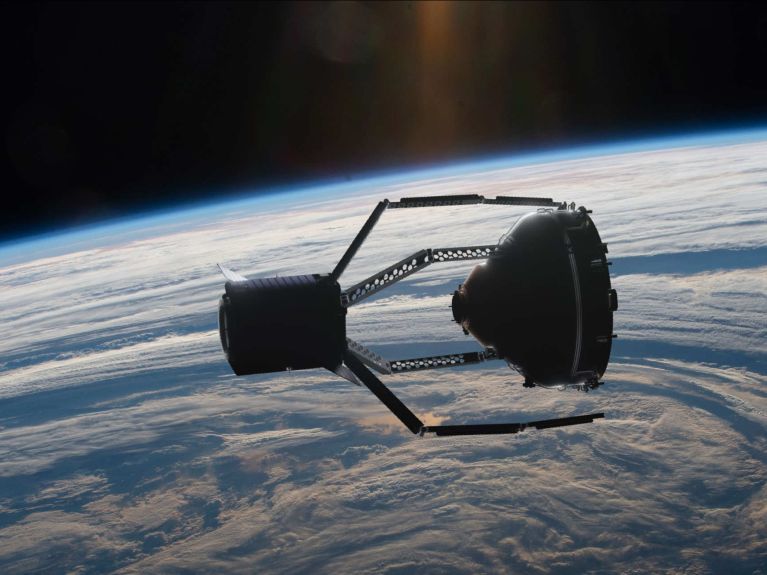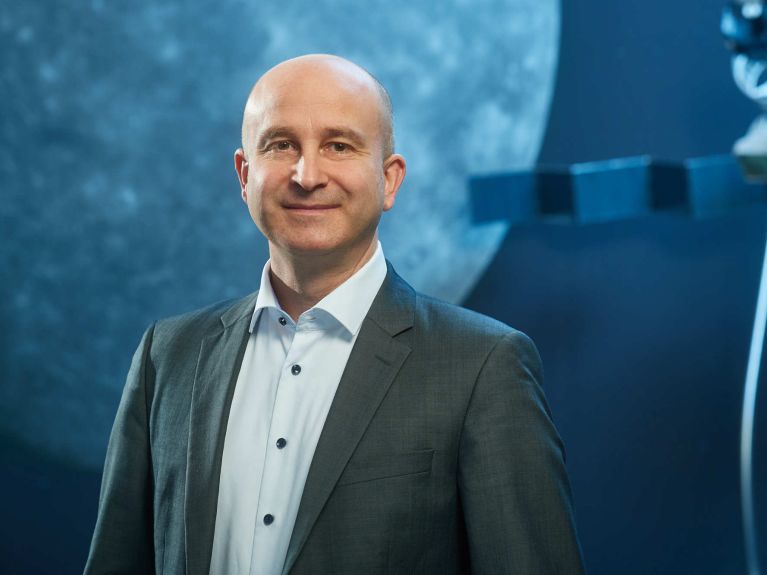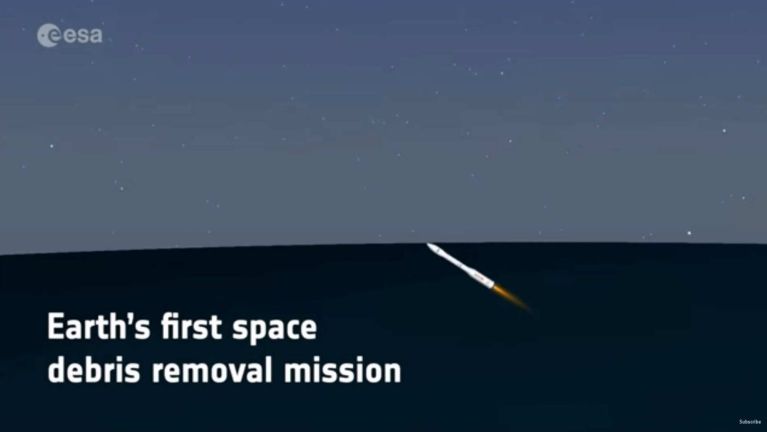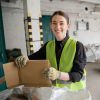Refuse collection in space
The ESA’s ClearSpace-1 mission is to retrieve space junk. Holger Krag, head of the ESA’s Space Debris Office in Darmstadt, talks about refuse collection in space.

Mr Krag, why is space junk dangerous?
We currently believe there to be more than 30,000 human-made objects in the Earth’s orbit that are more than ten centimetres in size, while the number of items of junk measuring one centimetre or more is even estimated to be around one million. Mostly these are fragments of rockets and satellites. They pose a huge problem for our infrastructure in space: Because the pieces of debris are travelling at very high speeds, a particle just a few millimetres in size is enough to cause serious damage if it collides with an intact satellite, or may even cause it to fail completely.

How will the space ‘tow truck’ proceed?
During its first mission, the vehicle will retrieve a European rocket adapter weighing around 100 kilos. The manoeuvre will involve a number of sensors and four mechanical arms that will first clasp and secure the object before contact is made. Then the vehicle will press the item of debris against itself, ignite its engine and transport the object to a very low orbit where both can quickly burn up in the atmosphere. Later missions will also be able to remove more than one object per mission.
Space junk is a problem that can only be resolved internationally.
What role in space security is played by international cooperation?
Space junk is a problem that can only be resolved internationally. Space is a shared resource - orbiting the Earth takes only around 100 minutes, and every event that generates debris in space has immediate global impacts. That’s why international cooperation has been established to prevent space junk, for example within the framework of the Inter-Agency Debris Coordination Committee (IADC), which will be meeting this year in Darmstadt and involves not only the ESA but all other leading space agencies too. In future, we should ensure that every mission cleans up after itself by carrying out manoeuvres at the end of the mission to remove all traces. This is the principle that the ESA is keen to introduce for its own missions from 2030.
Dieses YouTube-Video kann in einem neuen Tab abgespielt werden
YouTube öffnenThird party content
We use YouTube to embed content that may collect data about your activity. Please review the details and accept the service to see this content.
Open consent form
